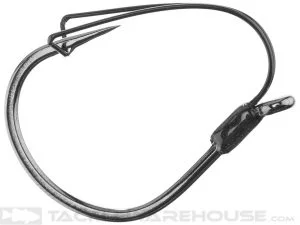When it comes to minnow fishing, one constant is, its FUN! I have always had a weakness for fun.
When I was asked to do an article on minnows I was a little apprehensive; “Minnow fishing”? That isn’t fair!!” Why write an article on minnow fishing? Anybody can do that, right? Having fished the Western Pro Bass circuits for over 25 years I wasn’t sure how it would be received by tournament anglers. Then it occurred to me that over the last few years I had taken several Pro’s on guided minnow trips. Not only did they have a blast, they discovered as I did, that minnow fishing can be a powerful tool in locating fish which you otherwise might never have known were there. Think about it. You don’t have to worry if you’re using the right bait, the right color, the right presentation etc… If you’re fishing minnows properly and aren’t getting bit, it’s likely the fish just aren’t there. If they are, you can quickly discover how many and what quality of fish are present. This can give you a lot of confidence when you return using artificial bait.
One other thing I would mention for the tournament angler is what you can discover regarding timing. Delta anglers will know what I mean. Timing tides for example is everything when it comes to the river. Likewise, in lakes when the wind is hitting a point at a certain angle or the sun goes over the hill just right, minnows can help you uncover mysteries with certainty. Guiding with minnows can make it easier to help young or inexperienced anglers catch bass and have a blast in the process.
Three basic techniques I use for fishing minnows: Shallow Water, Deep Water, and Free Line.
 Shallow fishing is done with a float. The rig consists of a hook, a small split shot (to keep the bait down), a float and a bobber stopper. The bobber stopper is important because it allows you to control the depth of the bait. For most applications you want your bait to swim within 18″ of the bobber. I prefer the wooden floats because they are easier to cast, are more durable and they hold better in the wind.
Shallow fishing is done with a float. The rig consists of a hook, a small split shot (to keep the bait down), a float and a bobber stopper. The bobber stopper is important because it allows you to control the depth of the bait. For most applications you want your bait to swim within 18″ of the bobber. I prefer the wooden floats because they are easier to cast, are more durable and they hold better in the wind.
 The Deep Rig is simple but a little harder to use. I put a hook on the end of the line and pinch a ¼ oz. bullet sinker 18″ up the line. Then I use my electronics to position the boat over a break or rock pile. Let the bait sink to the bottom and reel up a couple of turns. It’s just like mooching for salmon or stripers. Put the reel on free spool and hold it with your thumb. Let the fish run a bit then set the hook. This method is also very deadly for suspended fish on bait schools. Use your electronics to show how deep to go and drift through the schools. Boat position and correct interpretation of your electronics is the key to this method.
The Deep Rig is simple but a little harder to use. I put a hook on the end of the line and pinch a ¼ oz. bullet sinker 18″ up the line. Then I use my electronics to position the boat over a break or rock pile. Let the bait sink to the bottom and reel up a couple of turns. It’s just like mooching for salmon or stripers. Put the reel on free spool and hold it with your thumb. Let the fish run a bit then set the hook. This method is also very deadly for suspended fish on bait schools. Use your electronics to show how deep to go and drift through the schools. Boat position and correct interpretation of your electronics is the key to this method.
 The Free Line technique is best for sight fishing or pitching to big fish suspended under docks or trees. I use a bare hook with no weight and make long casts. With all these methods I use 12 lb. line, a Gamaktsu 2/O extra wide gap finesse hook and hook the minnow through the bottom lip and up through the nose.
The Free Line technique is best for sight fishing or pitching to big fish suspended under docks or trees. I use a bare hook with no weight and make long casts. With all these methods I use 12 lb. line, a Gamaktsu 2/O extra wide gap finesse hook and hook the minnow through the bottom lip and up through the nose.
A simple rule of thumb is: Get your bait where you think the fish are located by whatever means is possible without killing it.
Last year in a span of three weeks my clients and I landed and released 28 bass over 10 pounds including a 16.57. With results like that I don’t care what anybody says, if you haven’t tried minnow fishing, you are missing out! But then again I’ve always had a weakness for fun!
Ben is sponsored by: Fishdog Outdoors, G. Loomis Rod and Mercury Outboards. Check us out at www.fishdogoutdoors.com


